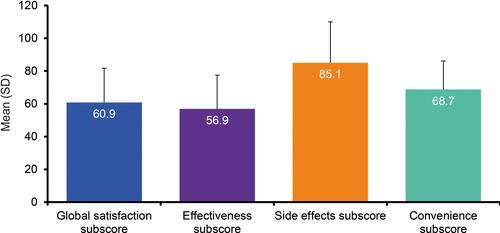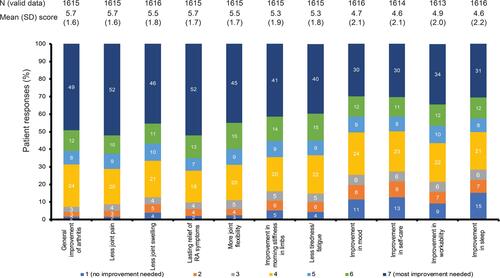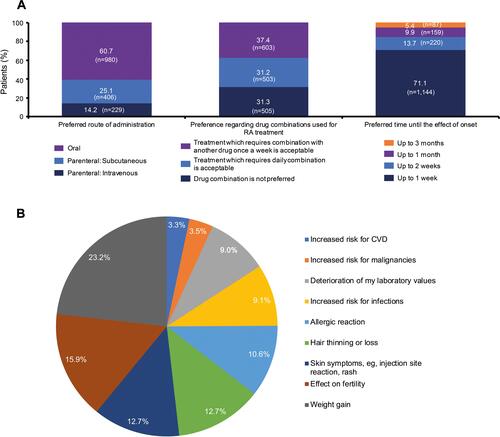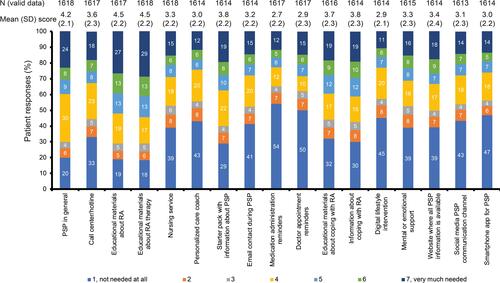Figures & data
Table 1 Sociodemographic Characteristics
Table 2 Rheumatoid Arthritis Disease Activity and Joint Assessment
Table 3 Current Medications Administered for Rheumatoid Arthritis
Figure 1 Mode of action for planned DMARD switches.

Figure 2 Treatment Satisfaction Questionnaire for Medication subscores.

Table 4 Predictors of Good Treatment Satisfaction (TSQM Global Satisfaction Score ≥80)
Table 5 Patient-Reported Outcomes
Figure 3 Patients’ expectations for RA treatments.

Figure 4 Patients’ preferences for RA treatments: (A) route of administration, drug combinations, and time to effect; (B) acceptability of potential side effects of RA treatments.

Figure 5 Patients’ need for patient support programs.

